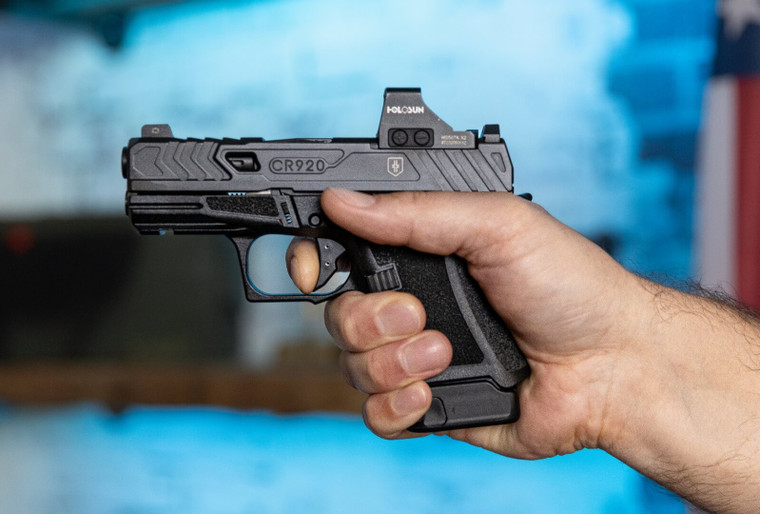Reset Your Trigger Like A Pro
Posted by Warrior Poet Society on Aug 22nd 2024
Only rarely does a single pistol round neutralize a violent aggressor, so learning to shoot fast, accurate, and repeatedly is a key to defensive tactics. John Lovell offers some of the guidance he teaches in pistol classes for training technique to deliver stopping power under pressure. Mastering trigger prep and reset will help you shoot like a pro as this integral element of shooting technique becomes instinct.
What Are Trigger Prep and Reset?
The prep and reset of a pistol trigger engages your pistol's firing pin mechanism, which maintains consistent trigger weight and keeps the pin from engaging willy nilly. It gives you consistent control over your weapon. A misfiring weapon is dangerous. But if you master the operation of this mechanism, you'll be dangerous to violent men.
Trigger Prep. Trigger prep is the amount of "travel" your trigger has before engaging resistance and the firing pin.
Trigger Reset. This is the minimum distance of trigger release required for the firing pin to be ready for the next shot.
WPS Pistol Class. This is the class where you can learn how to instinctively work with these tolerances for speed and accuracy.
Mastering Trigger Reset Fundamentals
It takes training and time to make precision resets a part of your skill set because it means mastering your feel for the trigger.
Don't Rely on Trigger Click. As you're learning trigger tolerances, it might be helpful to listen for the reset click on your gun. But you won't always be able to hear that click.
Rely on the Tactile. In the beginning, the reset click will teach you how to feel the trigger reset. Once you learn how the reset feels on your finger, you will know just how much trigger release is required to reset the firing pin before firing again.
Don't take your finger off the trigger. The whole point is to gain second-nature trigger sensitivity so that trigger pull and release is fine tuned within the tolerances of your pistol. How far do I have to release before it resets? How much to I have to squeeze before a shot goes off? If you train this skill properly, you'll answer these questions in split seconds without thinking.
Go slow to get fast. Carefully feeling for the "prep" and "reset" of your trigger will take some time and repetition, but it'll quickly build up muscle memory. The more intentionally and carefully you engage tactilely with the internal workings of your gun's trigger mechanism, the more quickly your finger will instinctively know. Then it'll be like driving a car.
Get in your reps. The only way to know is to train then shoot. So, get some training and hit the range to put in some rounds and reps.
RELATED POSTS | The Basics of Recoil Management • Why Buy A Pistol Compensator • Is Your Pistol Mission Ready?
Why Do I (John Lovell) Shout at My Pistol Students?
Because I like to make them flinch. Not just for fun though (mostly). I want to add some memory-building startling noise to the tactile training experience. It becomes an audible cue to them, plus it never hurts to add a little stress when teaching tactical skills.
After you master the foundational prep-reset movement, which means you're also mastering how to re-acquire your sight picture after the recoil of each shot, I like to speed things up and take it to the next level with students.
Each time they fire a round I shout "Off-On!" because it makes me feel a little like Mr. Miyagi (or something) and so they'll have that flinch response down the road when I'm not around to scream at them. I want pistol students to learn just how quickly they can reset and squeeze. If it means my voice echoing down the years in their heads, then so be it.
Why Can't I Just Go Shoot My Pistol?
Well. You can. And you should. But if you want to become truly proficient at all that goes into consistently, quickly, and accurately firing your weapon when it really counts, get good training and build the right habits and techniques into instinct.
Sometimes it all seems painfully slow, learning and mastering these independent elements in such an intentional way. But the slower you go now--ensuring that your ears are hearing, your mind is receiving, and your body is understanding and doing--the more automatic and accurate you'll become. Trust me on this.
Train Hard. Train Smart. Live Free. "OFF-ON!"

